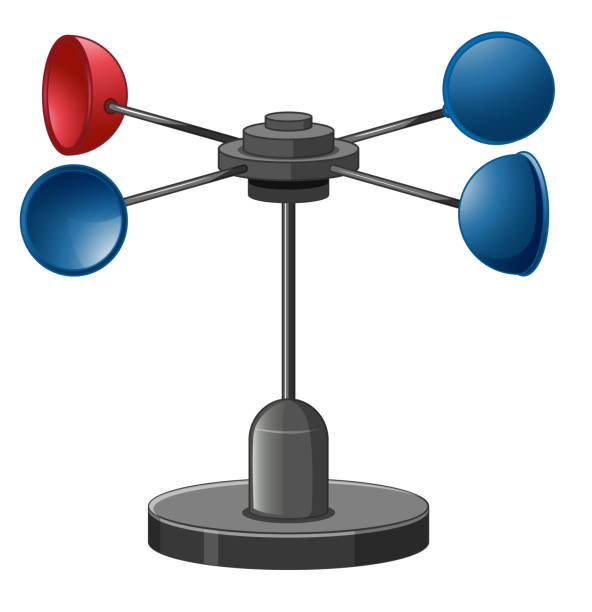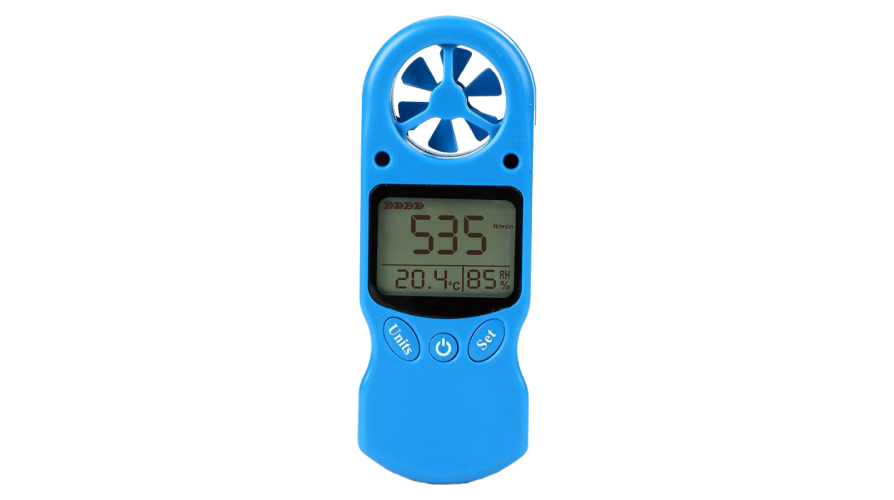Picking the Right Anemometer: A Comprehensive Acquiring Overview
Picking the Right Anemometer: A Comprehensive Acquiring Overview
Blog Article
Anemometers Unveiled: Understanding Their Significance in Environmental Monitoring and Safety Measures
The duty of anemometers in ecological surveillance and safety and security actions is commonly ignored, yet their significance is obvious. From meteorology to aeronautics safety, anemometers play a crucial function in providing precise information that notifies decision-making procedures and enhances general safety and security.
History of Anemometers
The advancement of anemometers can be traced back to the old people where basic wind determining devices were initial utilized. These very early wind dimension devices laid the foundation for the growth of more advanced anemometers with time. One of the earliest recognized anemometers was the hemispherical mug anemometer invented by Leon Battista Alberti in the 15th century. This design contained 4 hemispherical cups that gathered wind power, giving a measurement of its intensity based upon the rate of turning.
In the 18th century, the prominent scientist John Thomas Romney Robinson presented the Robinson anemometer, which included 4 hemispherical mugs placed on horizontal arms that prolonged from a central axis. This style came to be a standard in meteorological measurements as a result of its precision and integrity. Throughout the years, improvements in technology brought about the development of even more modern anemometers, consisting of ultrasonic anemometers and laser Doppler anemometers, providing enhanced accuracy and efficiency in gauging wind rate and direction. The history of anemometers showcases an amazing trip of advancement and progress in the area of weather forecasting.
Kinds of Anemometers
Throughout the field of weather forecasting, different kinds of anemometers have been established to properly gauge wind speed and direction. Sonic anemometers make use of ultrasonic signals to measure wind speed and instructions accurately. Hot-wire anemometers operate based on the concept that the cooling effect of wind on a warmed cord is symmetrical to the wind rate.
Applications in Weather Forecasting
Having actually reviewed the different sorts of anemometers used in meteorology for gauging wind rate and direction, it is necessary to explore their practical applications in the field. Anemometers play an important role in weather forecasting by providing real-time and accurate information on wind conditions (anemometer). Meteorologists utilize anemometers to keep track of wind rate and instructions to anticipate weather condition patterns, problem cautions for severe weather condition occasions like hurricanes, hurricanes, and tornados, and analyze weather for aviation safety and security
In weather forecasting, anemometers assist in recognizing local and regional wind patterns, which are important for forecasting weather changes and figuring out weather trends. These tools are additionally made use of in research to research microclimates, city warmth islands, and air contamination dispersion. In addition, anemometers are employed in agriculture to maximize plant management methods, such as watering and pesticide application, based upon wind conditions.
Importance in Aeronautics Safety
An indispensable aspect of making sure aviation safety lies in the meticulous monitoring of wind problems using anemometers. Anemometers play a vital function in aeronautics by giving real-time information on wind rate and direction, helping pilots in making informed decisions during flight, liftoff, and touchdown. Unpredictable and strong winds can significantly impact aircraft procedures, making it essential for aeronautics authorities to depend on accurate wind measurements to make sure the security of travelers and crew.

In the dynamic atmosphere of air travel, where also small adjustments in wind rate read the article and direction can have profound results, anemometers stand as indispensable devices for promoting safe and safe air traveling.
Role in Environmental Research
Anemometers play directory a crucial function in ecological research study by providing vital data on wind rate and direction. By precisely measuring wind characteristics, anemometers help researchers assess the motion of pollutants in the air, examine the effect of industrial emissions, and forecast the spread of impurities in the atmosphere.


Final Thought
In verdict, anemometers have actually played an important duty in ecological tracking and safety and security measures. Comprehending the relevance of anemometers is necessary for precisely determining wind rate and direction, which is vital for anticipating weather patterns, guaranteeing risk-free air travel operations, and carrying out environmental research studies.
One of the earliest well-known anemometers was the hemispherical mug anemometer designed by Leon Battista Alberti in the 15th century. Over the years, innovations in innovation led to the development of more contemporary anemometers, consisting of ultrasonic anemometers and laser Doppler anemometers, offering boosted precision and effectiveness in gauging wind speed and instructions. Hot-wire anemometers run based on the principle that the cooling impact of wind on hop over to here a heated cord is proportional to the wind rate. Meteorologists make use of anemometers to keep an eye on wind speed and direction to forecast weather patterns, issue warnings for severe weather events like tornadoes, storms, and cyclones, and evaluate climatic problems for air travel safety.
Comprehending the relevance of anemometers is important for precisely measuring wind rate and instructions, which is essential for predicting climate patterns, guaranteeing risk-free aeronautics procedures, and performing ecological studies. (anemometer)
Report this page